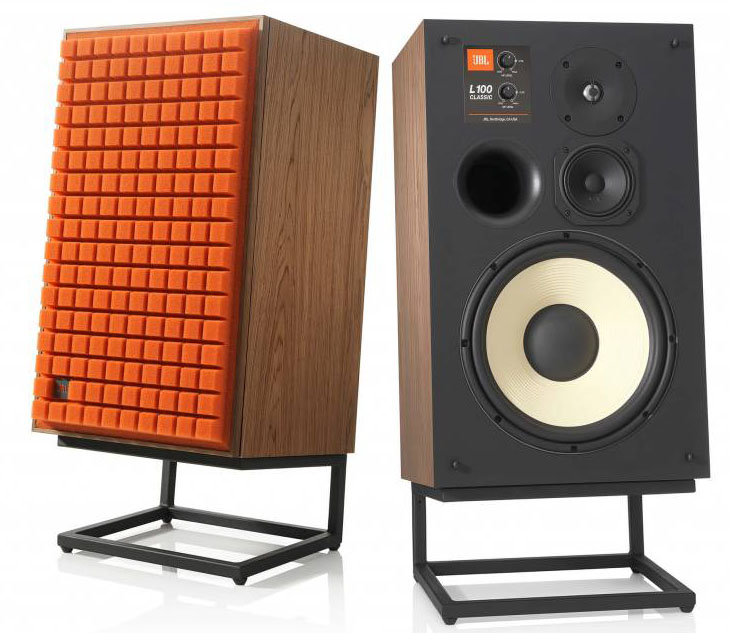
Table of Contents
Balancing Aesthetics and Acoustics When Covering Speakers with Fabric
Covering speakers with fabric has multiple advantages and disadvantages. Covering speakers with fabric can keep children from touching the drivers. Covering speakers with fabric can protect the drivers from dust and children. Some people like covering speakers with fabric to give them more color options to blend better with existing decor. Placing fabric over speakers can also have a negative impact on higher frequencies by attenuating higher frequencies.
Covering speakers with fabric can sometimes absorb too much higher frequency energies. Covering speakers with fabric can also have a negative impact on the distribution array of the speaker design. If you look at photos of any critical listening environment, you will see that most spacers remain uncovered so no frequency is impacted along with the speaker’s ability to distribute energy.
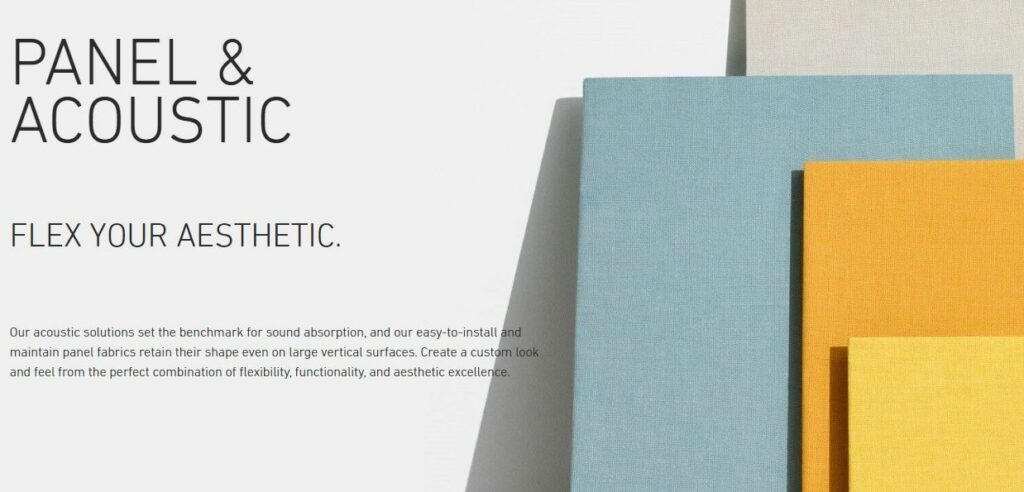
The Importance of Air Permeability Ratings in Speaker Fabric
When you cover any sound producing device with fabric, you must make sure the fabric you are using has the proper air permeability ratings. The APR is designed to show you how much air gets through the fabric. We want at a minimum a 96% APR. This means that the fabric will restrict 4% of the air moving through it from the speaker drivers. With a high resolution speaker, that can be a lot of lost energy. We want to make sure that all the time that the engineer placed within the speaker design is not negated by a fabric that restricts too much air flow.
A speaker has three main parts to what you hear. We have the electronics which are the amplifiers that provide the power and the drivers which move back and forth to produce the sound energy we eventually hear. We have the cabinet in which the drivers are placed and we have the drivers themselves. All three components combine their efforts together to make the final sound we hear. And don’t forget about the largest speaker, the room itself.
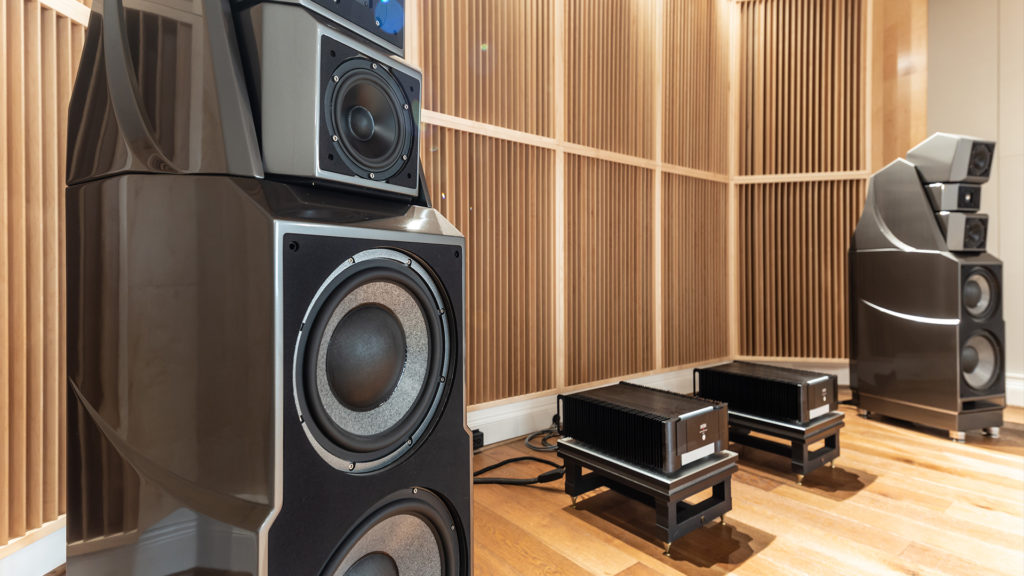
Acoustic Fields’ Approach to Fabric and Sound Absorption Technology
We face a similar issue when we are designing middle and high frequency sound absorption technologies at Acoustic Fields. We must have a fabric option since most people want to have numerous color and texture options. However, we must make sure that the fabric we cover our technology with, has the proper air permeability ratings that allow for maximum air flow through the fabric and across our foam technology.
We have found only one company that can meet our APR requirements. It is called Guilford of Maine. They have seperate acoustical fabrics that are designed to allow for maximum air flow through the fabric. You can find over 50 different colors and textures to choose from.
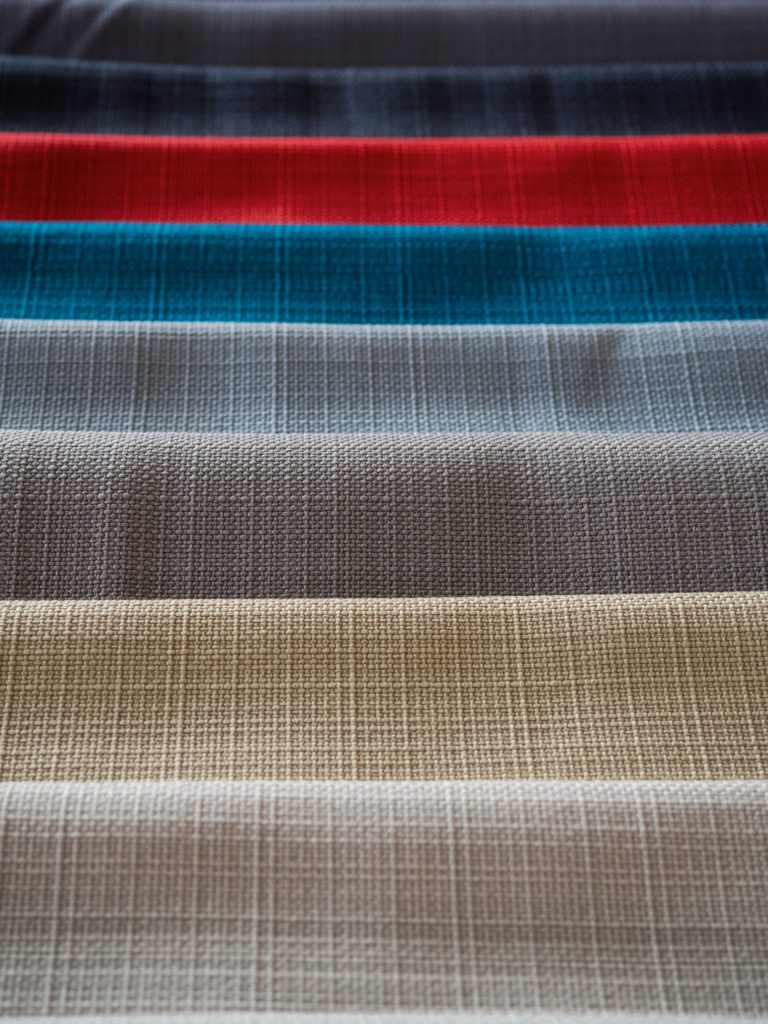
Acoustic Transparency in Speaker and Screen Design
Anything that covers the speaker restricts some type and form of air movement. We must allow for this restriction whether we are designing middle and high frequency sound absorption products or covering speakers with fabric. We must allow for this attenuation restriction in the final sonic outcome of our designs. Movie screens suffer from the same energy restrictions when covered. We have all heard the expression, acoustically transparent screen.
This is a screen that has micro perforations in it that allow for air movement through the pores from speakers placed behind the screen. The term used is acoustically transparent. This is more marketing hype than actual science. Any material type placed in front of a speaker will attenuate some frequencies so the term transparent is not applicable. We have tested many movie screens and found that most can attenuate higher frequencies from 3 – 6 dB SPL.
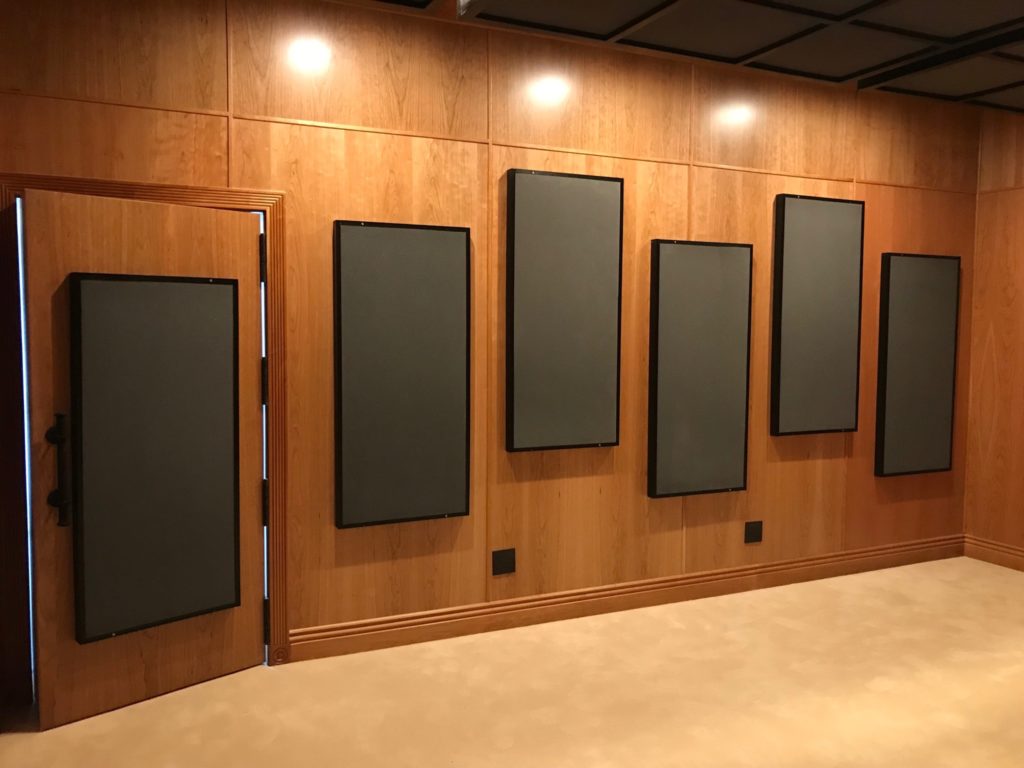
Designing With Sound Fabric Restrictions in Mind
Whether you are designing a speaker which radiates energy into a room or whether you are designing sound absorption technologies or whether you are designing a movie screen that will have speakers placed behind it, you must be concerned with how much energy and at what frequency that energy will be impacted.
You must know how restrictive the fabric is that you are using to cover your speakers along with the amount of energy that will be restricted by the covering of any type. You must then design the technology around that restriction. If it’s a movie screen, we need to make the perforations as large as we can and still allow for light to be reflected from the movie screen. In sound absorption technologies we may need to increase the amount of sound absorbing materials inside the panels to allow for the fabric restrictions.






